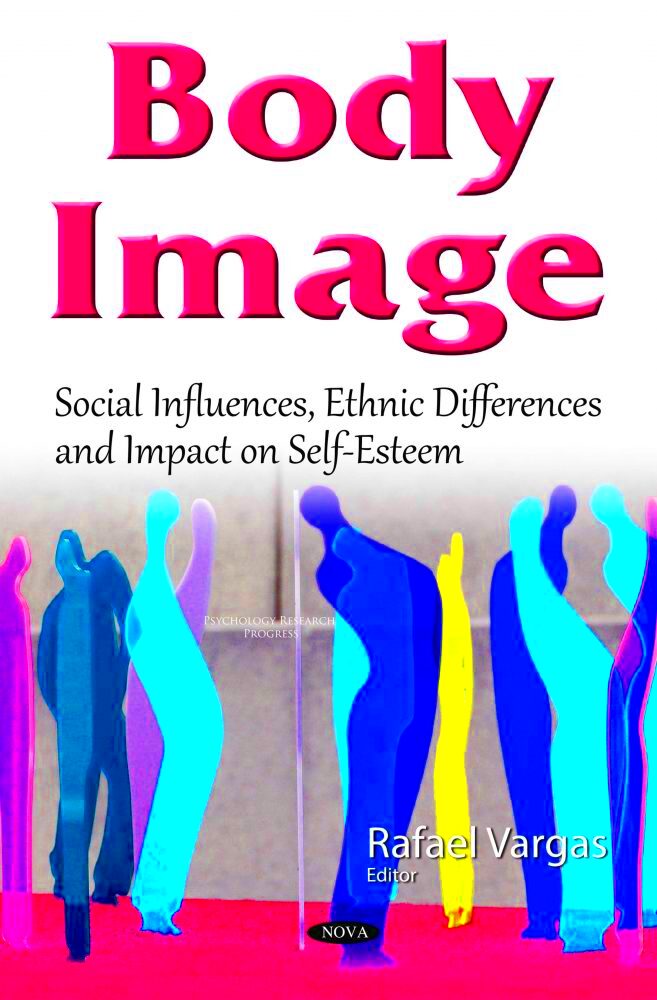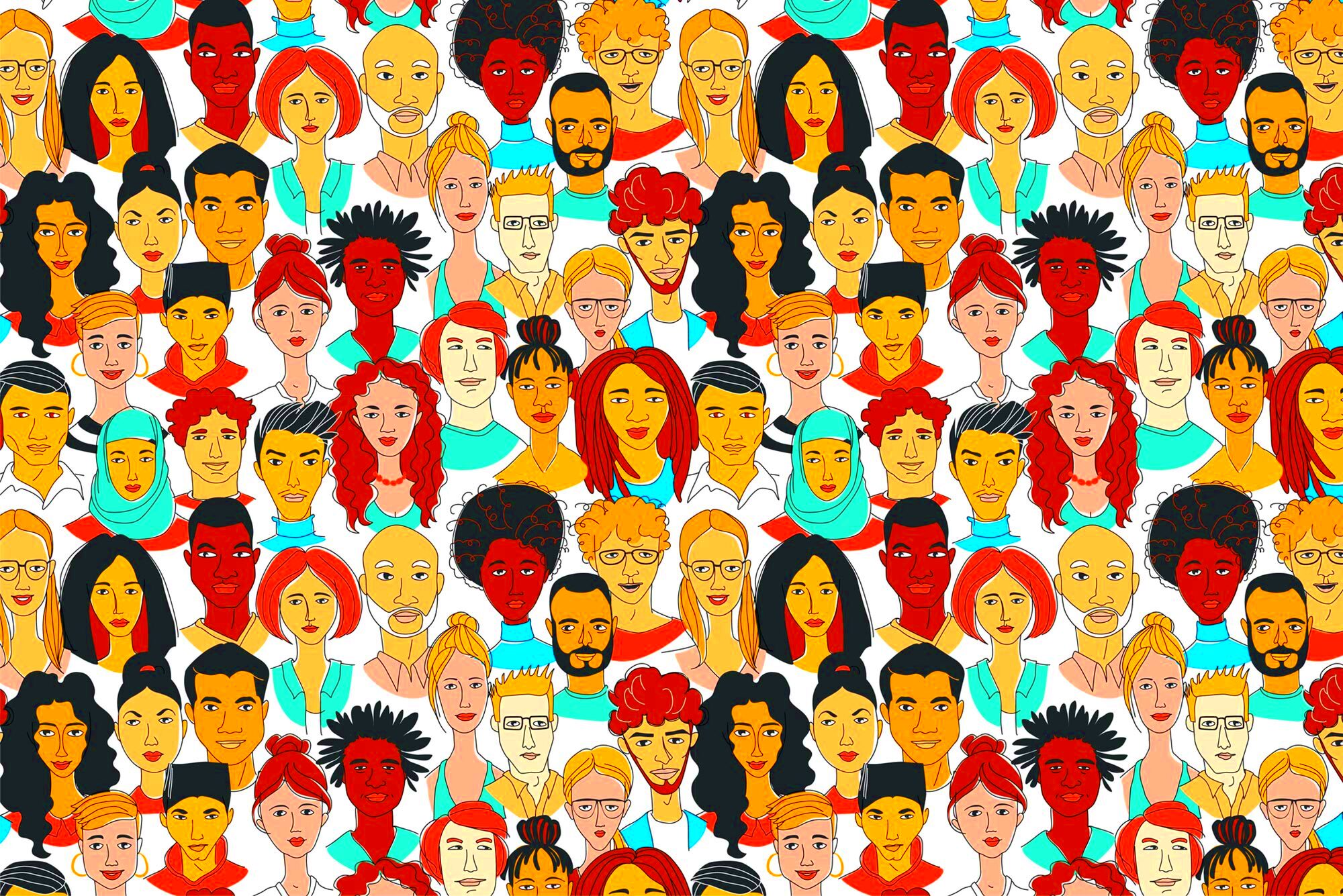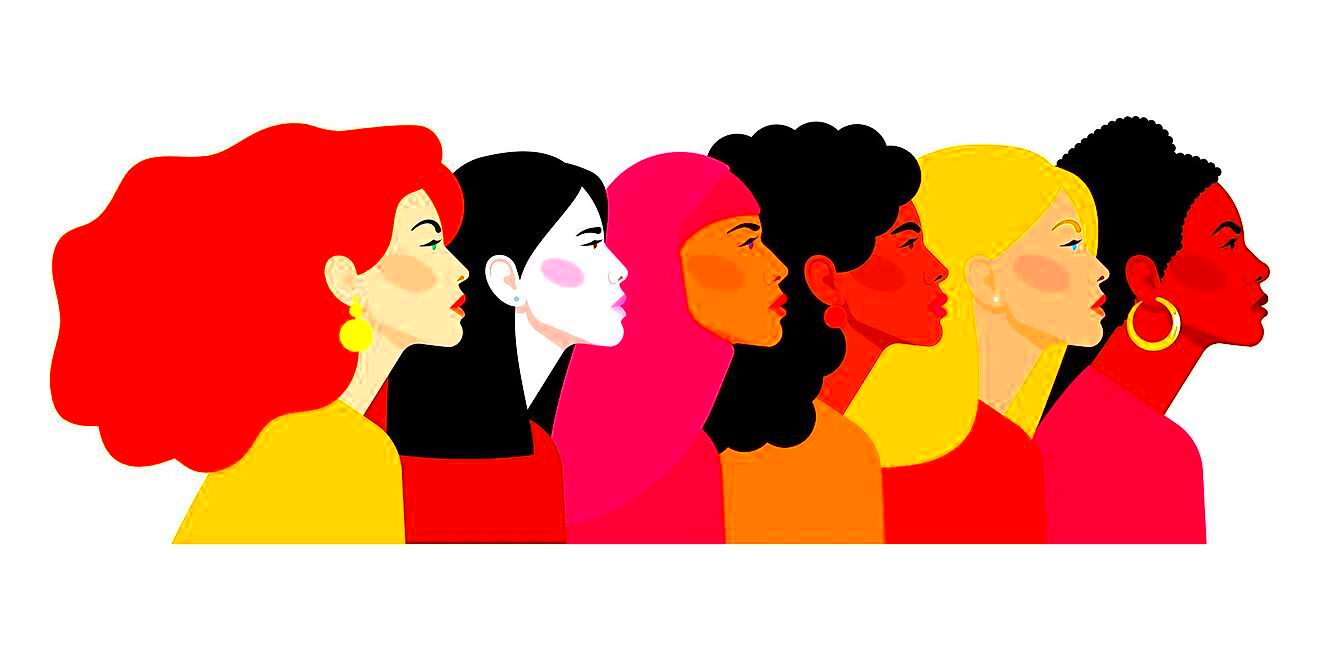Body image is how we see and feel about our physical appearance. It's influenced by many factors, including race and ethnicity. Our cultural background plays a key role in shaping our ideas of beauty, which can affect our self-esteem and mental health. In this post, we’ll explore how race and ethnicity impact body image and why understanding this connection is so important for fostering a more inclusive society.
Understanding Body Image and Its Importance in Society

Body image refers to the way we perceive our bodies and how we think others see us. This perception can have a significant effect on our overall well-being. A positive body image means feeling comfortable and confident in your skin, while a negative body
Body image is important in society because it affects how we interact with others, how we feel about ourselves, and how we engage in various aspects of life. The media, social norms, and cultural standards often shape these perceptions, contributing to the ideals of beauty that we see today.
Here are a few reasons why body image matters:
- Mental health: A healthy body image can lead to improved mental health, whereas poor body image can result in anxiety, depression, and eating disorders.
- Self-esteem: Feeling good about your body can boost self-esteem and confidence in personal and professional settings.
- Social interactions: People who feel positive about their appearance are more likely to have healthy social interactions and relationships.
Also Read This: A Comprehensive Guide to Deleting a Vector from Your VectorStock Account
How Race and Ethnicity Shape Perceptions of Beauty

Race and ethnicity play a major role in shaping our beauty standards. Different cultures emphasize various features and physical traits that are seen as attractive. These ideals vary widely across racial and ethnic groups and can impact how individuals feel about their appearance.
For instance, in some cultures, lighter skin tones may be associated with beauty, while in others, darker skin tones are celebrated. Similarly, hair texture, facial features, and body types may be valued differently based on cultural and societal influences.
Here's how race and ethnicity can shape beauty perceptions:
- Skin Tone: Lighter skin is often idealized in Western cultures, whereas other cultures may value darker skin tones more. In some African and Latin American communities, darker skin is seen as a sign of strength and beauty.
- Hair Texture: Straight hair is commonly seen as the standard in many Western countries, while curly or coiled hair may be more appreciated in other cultures.
- Facial Features: Certain facial features such as nose shape or lip fullness are considered attractive depending on the racial or ethnic group.
- Body Type: Different cultures have distinct views on body size and shape. For example, some cultures may prioritize fuller figures as a symbol of health, while others may prefer slimmer body types.
Overall, these cultural differences impact how individuals from different racial and ethnic backgrounds view themselves and others. These diverse perceptions can lead to challenges when individuals feel pressure to conform to one particular beauty ideal over another.
Also Read This: Avoiding Copyright Issues on YouTube Best Practices for Creators
Media Representation and Its Impact on Body Image
The media plays a powerful role in shaping our perception of beauty and body image. Movies, TV shows, advertisements, and social media all portray certain beauty standards that can influence how we see ourselves and others. These representations often focus on a narrow idea of beauty, which can create unrealistic expectations for individuals, especially when it comes to body size, skin tone, and facial features.
When we are constantly exposed to images of "ideal" bodies in the media, it can lead to feelings of inadequacy, especially for those who don’t fit this mold. For example, the emphasis on slimness and tallness in fashion magazines has contributed to the rise of body dissatisfaction and eating disorders.
The following points highlight how media representation affects body image:
- Unrealistic Standards: Many media portrayals show idealized bodies that are not representative of most people, setting unattainable standards that can affect self-esteem.
- Limited Diversity: Historically, the media has lacked diversity in body types, skin tones, and ethnicities. This lack of representation can make people feel as though they don’t belong or are not valued.
- Influence on Youth: Young people, especially teenagers, are highly influenced by media portrayals of beauty, which can shape their ideas of self-worth and attractiveness.
- Body Image Issues: Continuous exposure to edited, airbrushed images can lead to a distorted sense of reality, contributing to body dysmorphia and other mental health concerns.
Also Read This: How to Resize Image Pixels Effectively
Cultural Differences in Body Image Standards
Body image standards can vary significantly from culture to culture. What is considered beautiful or attractive in one society might not be viewed the same way in another. These cultural differences are shaped by traditions, historical influences, and societal norms, leading to different expectations for body size, shape, and features.
For instance, in Western countries, there is often a strong focus on thinness, while in many African and Caribbean cultures, a fuller figure may be seen as a sign of wealth, health, and beauty. Similarly, some Asian cultures might value fair skin and delicate features, whereas others might appreciate more robust or muscular body types.
Some examples of cultural differences in body image include:
- Western Culture: Thinness and toned bodies are often celebrated, with the media and fashion industry promoting slim models as the standard of beauty.
- African Culture: In some African societies, fuller body types are associated with beauty and vitality, and larger figures are seen as a sign of fertility and abundance.
- Latin American Culture: Many Latin American cultures admire curvy and hourglass figures, where body shape, particularly larger hips and thighs, is often considered attractive.
- Asian Culture: In some parts of Asia, fair and smooth skin is highly valued, and smaller, more delicate body types are considered ideal.
These cultural standards influence individual self-perception and can also contribute to body image issues when individuals feel pressured to conform to a beauty ideal that doesn’t align with their cultural background.
Also Read This: How to Download Beats from YouTube to BandLab for Music Production
The Role of Social Media in Shaping Body Image
Social media has a significant impact on body image, especially in today's digital age. Platforms like Instagram, Facebook, TikTok, and Snapchat allow users to share photos and videos, often highlighting curated or idealized versions of their lives. While social media can offer inspiration and a sense of community, it also promotes unrealistic beauty standards, which can harm self-esteem and mental well-being.
One of the major issues with social media is the prevalence of filters and photo-editing tools. These technologies enable users to alter their appearance, creating an illusion of perfection that doesn’t reflect reality. As a result, people may feel pressured to look a certain way, leading to body dissatisfaction and an unhealthy focus on appearance.
Here’s how social media influences body image:
- Filters and Editing: Many people use filters to change their facial features, skin tone, and body size. This distorts what is considered "normal" and creates unrealistic beauty standards.
- Comparison Culture: Social media encourages constant comparison. Seeing others’ "perfect" lives and bodies can make people feel inadequate or like they don’t measure up.
- Influencers and Celebrities: Influencers and celebrities often set beauty trends, and their curated images may make their followers feel like they need to look a certain way to be considered attractive or successful.
- Body Positivity Movement: On a positive note, social media has also given rise to the body positivity movement, encouraging people to embrace diverse body types and challenge traditional beauty standards.
While social media can have a negative impact on body image, it can also provide a space for individuals to connect, share experiences, and support one another in accepting their authentic selves. It’s important to remember that social media often reflects only a small portion of someone's life and doesn't capture the full reality.
Also Read This: 10 Creative Ideas for Capturing Unique and Artistic Photos
Challenges Faced by Different Racial and Ethnic Groups
People from different racial and ethnic backgrounds often face unique challenges when it comes to body image. These challenges are shaped by both cultural norms and societal expectations. While body image issues affect individuals of all races, the struggles faced by certain groups can be more pronounced due to historical and social factors.
One of the biggest challenges is the lack of representation in media. Many racial and ethnic groups have been historically underrepresented or misrepresented in mainstream media, which influences how individuals view themselves. For example, people of color often see fewer role models in advertising, movies, or fashion that reflect their true beauty, leading to feelings of inadequacy or pressure to conform to a Eurocentric standard of beauty.
Here are some challenges that different racial and ethnic groups face when it comes to body image:
- Underrepresentation: People from various racial and ethnic backgrounds may struggle to see themselves reflected in popular media, making it harder for them to feel represented or valued.
- Colorism: Within some racial groups, lighter skin is often considered more attractive than darker skin, which can create internalized colorism and body image issues.
- Stereotypes: Racial stereotypes can contribute to body image struggles, especially when individuals feel pressured to live up to cultural expectations (e.g., athletic bodies, curvy figures, or slenderness).
- Discrimination and Bias: Racial and ethnic minorities may experience discrimination based on their appearance, leading to negative self-perceptions and social anxiety.
These challenges highlight the need for greater diversity and inclusivity in media and society, helping to create an environment where people of all backgrounds can feel accepted and beautiful in their own skin.
Also Read This: Can YouTubers See Who Unsubscribed
Steps Towards Positive Body Image and Inclusivity
Achieving a positive body image requires a shift in how we view ourselves and others. It’s not just about feeling good about our own bodies but also about embracing inclusivity and celebrating all forms of beauty. People from all racial and ethnic backgrounds should feel empowered to appreciate their uniqueness and challenge narrow beauty standards.
Here are some important steps toward fostering a positive body image and promoting inclusivity:
- Media Representation: One of the most effective ways to combat body image issues is through better representation of diverse body types, skin tones, and features in the media. The more we see diverse images of beauty, the more we can appreciate different looks.
- Body Positivity Movement: Supporting the body positivity movement, which encourages people to accept and love their bodies as they are, regardless of shape, size, or color, can help change societal beauty standards.
- Inclusive Language: Use inclusive language that avoids reinforcing harmful stereotypes or unrealistic beauty ideals. Encourage conversations about beauty that embrace differences and highlight the value of diversity.
- Self-Love and Acceptance: Practicing self-love involves rejecting harmful societal pressures and learning to appreciate your body for what it can do, not just how it looks. This can help individuals shift from focusing on appearance to valuing personal strengths and achievements.
- Community Support: Surrounding yourself with a supportive and positive community can make a huge difference in improving body image. It’s essential to engage in spaces where diversity is celebrated, and all individuals feel respected.
Incorporating these practices into our daily lives can help create a more inclusive society where everyone feels validated, beautiful, and confident in their own skin.
Also Read This: How to Project an Image from Your Phone onto Paper
Frequently Asked Questions
1. How do race and ethnicity affect body image?
Race and ethnicity influence body image through cultural standards of beauty. Different cultures emphasize different features, such as skin tone, body shape, and facial features. Media representation and societal expectations also impact how people perceive their bodies, which can lead to body dissatisfaction or confidence issues if individuals feel they don't meet these standards.
2. Can body image issues be overcome?
Yes, body image issues can be overcome with the right mindset and support. Focusing on self-love, embracing diversity in beauty, and surrounding yourself with positive influences are key steps to improving body image. Therapy and counseling can also be effective in addressing deep-rooted body image concerns.
3. Why is media representation important for body image?
Media representation is important because it shapes societal beauty standards. When people see diverse bodies, faces, and skin tones in the media, they are more likely to feel represented and accepted. Increased diversity in media helps break down unrealistic beauty ideals and encourages people to love their natural features.
4. What can I do to improve my body image?
To improve body image, start by focusing on what your body does for you rather than just how it looks. Practice gratitude for your health, engage in activities that boost your self-esteem, and avoid comparing yourself to unrealistic standards in the media. Surrounding yourself with supportive people and learning about body positivity can also help you build confidence.
5. How can we promote inclusivity in beauty standards?
Promoting inclusivity in beauty standards requires recognizing the beauty in all forms and celebrating diversity. This can be achieved by promoting diverse representation in media, embracing different body types, and supporting movements like body positivity. It’s important to create an environment where everyone feels valued for their individuality, not their conformity to one narrow beauty ideal.
Conclusion
In conclusion, race, ethnicity, and cultural influences significantly impact body image and perceptions of beauty. The challenges faced by individuals from diverse backgrounds highlight the need for greater representation and inclusivity in media and society. By embracing diverse beauty standards and promoting positive body image, we can create an environment where everyone feels empowered and accepted, regardless of their appearance. Taking steps toward body positivity, supporting inclusive communities, and rejecting harmful stereotypes are essential in fostering a society that values all body types, skin tones, and cultural backgrounds. Together, we can break down barriers and encourage self-love and acceptance for everyone.

 admin
admin








